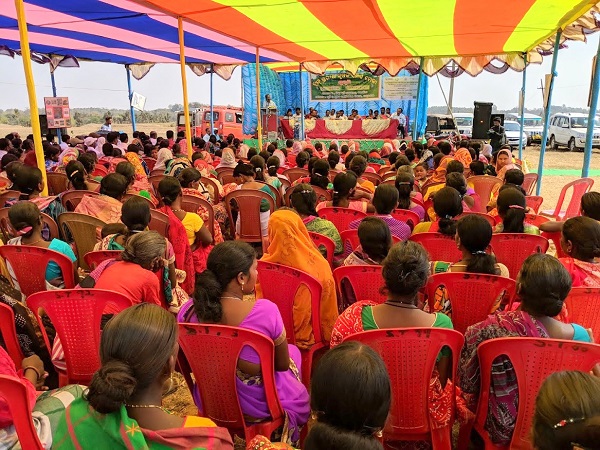ASKIPAL, India (CIMMYT) – A recent meeting in India focused on the value of maize for unused land in India’s Odisha plateau during monsoon season and the importance of women in agriculture.

Odisha lies on India’s east coast and is home to vast tracts of fertile paddy fields spread along the coastline and the district’s southern region. To the north, however, lies Odisha’s north-central plateau, an upland area dominated by red lateritic soils used for producing staple crops under rainfed conditions during the monsoon and usually left fallow, or unused, during the dry, winter season.
Upland fields are often left fallow in the rainy season as well, despite receiving around 1,400 mm rainfall on average. Rice in these areas is a risky proposition, but the soils are surprisingly well suited to maize production without irrigation during the monsoon. Indigenous tribes, who have been cultivating traditional maize varieties for generations, are the main inhabitants this plateau region.
Over the past couple of years, improved maize cultivation, including with hybrids, has emerged as a potential income-generating activity for tribal populations, especially women farmers, in the Odisha plateau.
In February the International Maize and Wheat Improvement Center (CIMMYT)-led Cereal Systems Initiative for South Asia (CSISA), in partnership with Odisha’s Department of Agriculture of Odisha (DOA) organized a meeting in the village of Askipal, Odisha in eastern India. The meeting was discussed improved maize cultivation during monsoon season and how to improve on what was done in 2017 to prepare for the upcoming 2018 Kharif season.
“Our population is increasing but not our land,” said Mangal Singh Modi, a member of the legislative assembly of Jashipur constituency in Mayurbhanj, Odisha. “We have to increase our productivity to ensure there is food for all. In Mayurbhanj, farmers should choose the right crops and varieties according to their type of land to get better productivity.”
The event allowed farmers to discuss their experiences planting improved maize, sell seed to poultry feed millers and discuss benefits gained by tribal and women farmers and planning for the 2018 monsoon season, which will begin around mid-April.
Over 500 participants attended the meeting, including farmers, extension agents, scientists, service providers and representatives from seed companies. Participating organizations included the Odisha Livelihood Mission, local government departments of Odisha, the Reliance Foundation, DuPont Pioneer seeds and the Integrated Tribal Development Agency of Odisha.
Wheat is popular in northern India, rice is popular in eastern India, especially the coastal belt and maize is popular in the tribal-dominated plateau belt. Discussions at the meeting focused on the importance of planting improved maize varieties to ensure productivity and strengthening market linkage with poultry feed millers.
“The Agriculture Department of Odisha will support farmers to impart required scientific knowledge,” said Damodar Sethi, Deputy Director of Agriculture in Mayurbhanj. “Farmers should adopt best agronomic practices as recommended to increase productivity.”
He said the Department of Agriculture would like to popularize maize during monsoon season as a way to increase productivity.
“Women farmers should come forward to bring changes in agriculture, and more importantly, in our society,” Sethi continued.
Debasish Marndi, Chairman of Special Development Council for the Government of Odisha also focused on the importance of including women in the expansion of agriculture in Mayurbhanj.
“Tribal development and empowerment of women farmers are our prime concerns and we are glad to see Mayurbhanj is becoming a lead commercial maize production center,” Marndi said. “The hard work of tribal community members and women self-help groups need a special appreciation.”